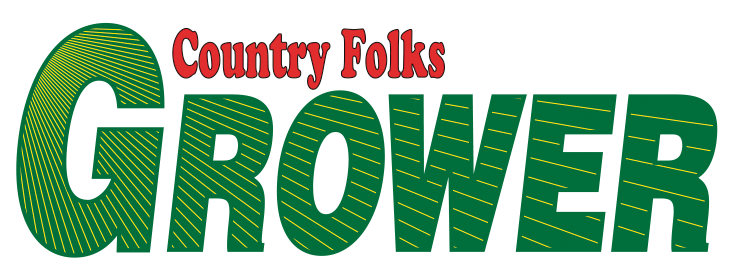Crop Comments: Helping cover crops enjoy a ‘midnight’ snack
Sleep therapists commonly believe that a midnight snack helps the snoozer enjoy unconscious rest more peacefully and productively compared to the non-snacker. The snacking endorsement also comes from plant dietitians, a scientific comradery in which I am an honorary member.
When cover crops/winter forages go to bed for the cold weather season, they are effectively hibernating. The correct term for plants taking a long winter’s nap is dormancy. One rather sophisticated definition for dormancy says, “For plants, dormancy declares when to prepare their soft tissues for freezing temperatures, dry weather or water and nutrient shortage. Instead of exerting energy, in attempts to grow, they sense the need to stop growing and conserve energy until mild weather returns.”
Most agronomists classify the following as winter forages: wheat, rye, triticale, barley and speltz. Hopefully, anyone reading this and wishing to plant winter versions of wheat, triticale or barley has done so – enjoying the process of looking down straight, nicely formed green rows. Hopefully these rows escape the beaks of hungry, migrating Canada geese. The successful planting of rye and speltz enjoys a wider window. These two species are more accommodating of less-than-ideal planting dates.
If rye and speltz are planted by Election Day, they very likely can store enough root energy reserves to survive Northeast winters. There’s still a bunch of warmth in Northeast soils, carried over from July through September. Any documented phosphorus (P) needs should be met at planting time; this is the generally accepted starter nutrient for almost all crops.
Moving further into autumn, with growers hopefully now managing an emerged crop, I refer to New York field studies. That research found that up to 60 lbs. of nitrogen (N) per acre increased spring yields of autumn-planted triticale by 43%, on fields without prior spring/summer manure applications. Early plantings and autumn N applications significantly increased the number of tillers, which then set the spring yield potential.
With autumn N applications, we strongly recommend including sulfur (S), with a 10:1 N:S ratio. Never forget: a S atom is the cornerstone of the essential amino acids methionine and cysteine. Also remember that rye plants – taller than other winter forage species – are more prone to lodging when fall-applied N rates exceed 50 lbs./acre.
As another form of bedtime snack for winter grain forages, folks with sod manure injectors can satisfy spring N needs by applying manure up through November or whenever frosted ground becomes impenetrable. Five winters ago, some New York farmers could spread manure as late as January. Manure N is in the ammonia (NH3) form, which attaches to soil particles, avoiding leaching and denitrifying. When ground warms come spring, NH3 converts to nitrate, then is immediately metabolized by winter forage vegetation, already green and growing.
Depending on the injector type, it may be necessary to roll fields after injection, guaranteeing a smooth surface for spring mowing. Fields that are flat or slightly dish-shaped – thus prone to collecting spring runoff – are susceptible to snow mold that can kill the crop. Fertilizing those areas just before snowfall with two quarts of liquid S fertilizer and a spreader sticker has effectively countered snow mold.
The ailment that concerns us here a fungus and turf disease that damages or kills after snow melts, typically in late winter. Its damage is usually concentrated in circles three to 12 inches in diameter. When winter forages start perking up – about when crocuses start popping out of the ground – they will sop up some surplus moisture that welcomed mold spores in the first place, but it’s still a good idea to use the liquid S fertilizer.
With the cost of commercial N fertilizer still higher than it was pre-COVID, another source of this nutrient that pencils out quite favorably is broadcast medium red clover. Do this when snow is all gone from meadows, except for lingering traces of stubborn snow drifts. Red clover (Trifolium pratense) can be excellent green manure, fixing N, suppressing weeds and increasing corn yields.
As a slow-growing cool-season species, T. pratense is suitable to under-sowing into winter small grains in early spring. It continues to grow after small grain harvest – combined or baled, to be terminated, preferably by disking – in autumn or the following spring before corn planting.
Frost-seeding is a method of broadcasting where seeds are spread (usually spun) onto frozen ground, to be worked into the ground through the freezing/thawing action of soil. The N contributed by healthy red clover sods to the next crop in the rotation, or to the accompanying awakening winter forage, can be as much as 100 lbs./acre. But note that in a slow-warming spring, applying some of the much more reactive commercial N reliably provides reasonable crop insurance.
One additional suggestion is to spin on urea, ammonium nitrate or UAN (a blend of the other two ingredients) as you would in a normal cost year – a status which autumn 2025 appears to have earned. With fertilizer costs being much lower than in 2021, spending some on soil testing is money well spent. I look at testing this way: when fertilizer costs are reasonable, growers can afford to test. When they’re clearly too expensive, growers can’t afford not to test. Make sure your soils lab does base saturation percentages.
In summary, legume cover crops produce N for subsequent crops, and may be a more appropriate choice than grasses for N-deficient situations. Legumes can capture N from the air and convert it to ammonia (NH3¯) in the soil, where it is quickly changed to ammonium (NH4⁺) and eventually to the plant-available form, nitrate (NO3¯).
How much N credit can be made for a legume cover crop? Studies from Ontario, Michigan, Iowa and Wisconsin indicate that a clover or mature alfalfa cover crop may enable a corn grower to reduce N rates by 50 to 100 lbs. per acre.
by Paris Reidhead





